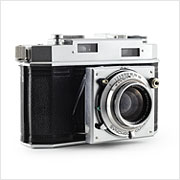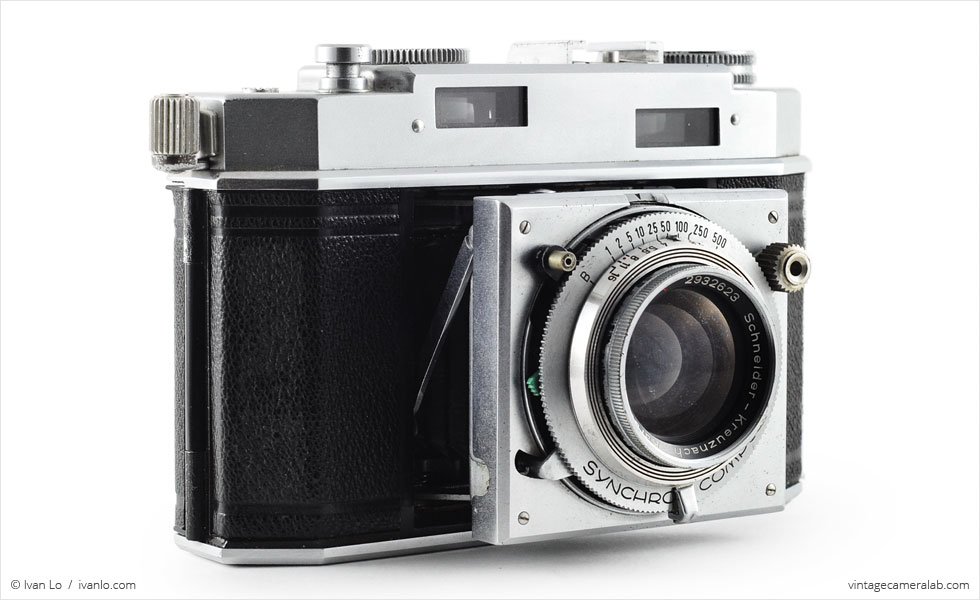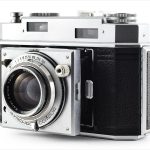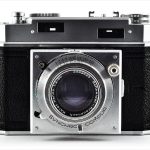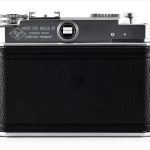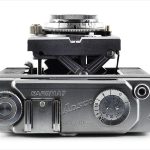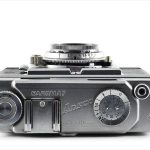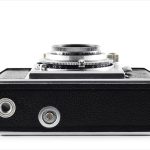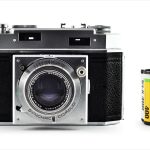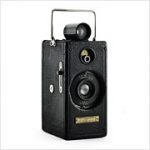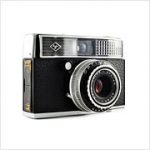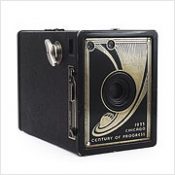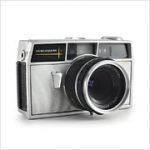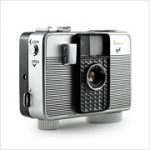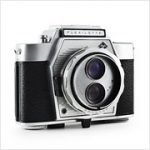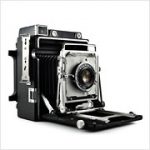Ansco Karomat Specifications
| Manufacturer: | Agfa Camera-Werk for |
| Ansco-GAF | |
| Origin: | USA |
| Made in: | Munich, West Germany |
| (modern day Germany) | |
| Introduced: | 1951 |
| Type: | Folding, Rangefinder |
| Format: | 135 Film |
| Dimensions: | 12.4 x 8.2 x 5.3 cm (closed) |
| 12.4 x 8.2 x 7.1 cm (open) |
Ansco Karomat Overview
The Ansco Karomat (also known as the Agfa Karat 36 and Agfa Karomat 36) is a 35mm rangefinder camera built by Agfa and introduced in 1951 by Ansco. Although based on Agfa’s original Karat which was designed to use the precursor to Agfa’s proprietary 35mm Rapid Film cartridge, the Karomat actually uses today’s standard Kodak 35mm cassette.
In order to use the Karomat, the lens must first be released by pulling the ribbed metal lever immediately on the user’s left-hand side of the lens. Once the exceptional Schneider-Kreuznach 50mm f/2 Karat Xenon lens has been extended, it can be focused by rotating the metal focusing knob while looking through the rangefinder window. Aperture can be set via the tab underneath the front element while the Synchro-Compur shutter’s speeds (1-1/500 seconds and Bulb) can be adjusted by rotating the outer ring on the lens. At 10 o’clock on the lens is a flash connector with a synchronizing lever at nine.
The shutter button can be found on the user’s right-hand side of the top plate, just inside of the film advance lever (which, unlike most cameras, you have to pull backwards) and the automatically advancing frame counter. On the other side of the shutter button is a depth of field calculator, a cold shoe, a film rewind knob, as well as a film speed wheel and indicator window. The latch for the film door can be found at the bottom of the user’s left side panel while the film rewind release button and tripod socket can be found on the bottom.
I bought this Ansco Karomat through an eBay auction for about $20 shipped. The seller didn’t know much about it and was selling it as-is but the price was so low that I decided to take a chance on it. Cosmetically, the Karomat is in excellent shape. Mechanically, however, it’s a different story; the focus lever is frozen, the shutter is sticky, and the film advance lever needs a spot of oil. Still, I got a great deal on a beautiful German camera with a clean exterior and a flawless piece of Schneider-Kreuznach glass.
Find your very own Ansco Karomat on eBay.
McKeown, James M. and Joan C. McKeown’s Price Guide to Antique and Classic Cameras, 2001-2002. (Grantsburg, WI, USA: Centennial Photo Service, 2001), p 52.
